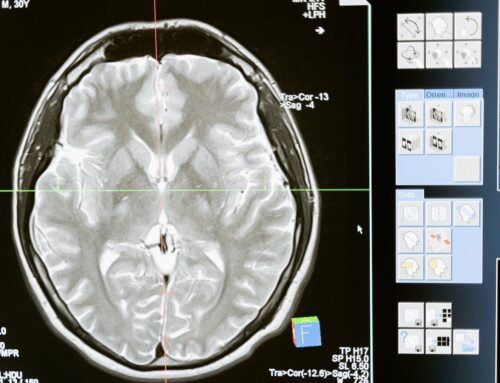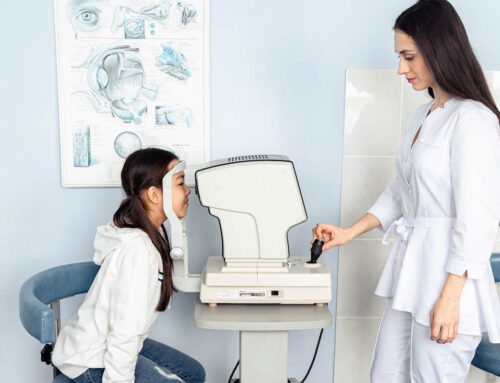In this blog I’ll be discussing both the purpose and scope of an examination for discovery. I’ve previously discussed in general terms, the discovery process, which is stage 3 in the steps in a tort action or lawsuit, in order to seek compensatory damages further to the negligent conduct or behaviour of a defendant.
If you want to learn more about the various steps involved in kickstarting your civil litigation case against the at-fault driver via a tort action or lawsuit, including, but not limited to, a broader discussion of the discovery process, inclusive of both (1) documentary discovery and (2) examinations for discovery, then please click the “link” to read my blog entitled “What are the Steps in a Tort Lawsuit for Personal Injuries?”.

What is an Examination for Discovery?
The examination for discovery stage of the process involves obtaining oral evidence from you and the defendant under oath and before trial, where the lawyers for the opposing party ask questions via cross-examination of the opposing party, and their lawyer, pertaining to the relevant issues contained in the pleadings (i.e. Statement of Claim, Statement of Defence, et cetera). The determination of which questions are deemed relevant at your examination for discovery is ultimately shaped by what we plead or claim in your Statement of Claim. Therefore, if an issue emerges from what is pleaded in the paragraphs of your Statement of Claim, then the other lawyer can ask you about it at your examination for discovery. I’ll delve into this more a little later in this blog.
If you want to learn more about the discovery process, inclusive of both (1) documentary discovery and (2) examinations for discovery, then, again, please click the “link” to read my blog entitled “What are the Steps in a Tort Lawsuit for Personal Injuries?”.
The Purposes of Examinations for Discovery

The starting point for understanding the purposes of examinations for discovery is the seminal Court of Appeal for Ontario case entitled Modriski v. Arnold 1947 CanLII 316 (ON CA), [1947] O.J. No. 132, [1947] O.W.N. 483 (Ont. C.A.)., where on page 323 Hope J.A. articulated same as follows:
As I appreciate the matter, the purpose of discovery either by interrogatories as in England or by oral examination as in Ontario, would appear to be:
- to enable the examining party to know the case he has to meet;
- to enable him to procure admissions which will dispense with other formal proof of his own case, or
- to procure admissions which will destroy his opponent’s case.

Furthermore, the Ontario Supreme Court also commented on the purposes of discovery in a case entitled Ontario Bean Producers’ Marketing Board v. W. G. Thompson & Sons Ltd.; Farm Products Marketing Board, Third Party, 1981 CanLII 1799 (ON SC), [1981] O.J. No. 2919 at para. 9, 32 O.R. (2d) 69 (Ont. H.C.J.), affd [1982] O.J. No. 3173, 35 O.R. (2d) 711 (Ont. Div. Ct.), where further to the aforementioned Court of Appeal for Ontario case Modriski v. Arnold, supra, Trainor J. noted at para. 9, the following:
(4) The purposes of discovery are:
(a) to enable the examining party to know the case he has to meet;
(b) to procure admissions to enable one to dispense with formal proof;
(c) to procure admissions which may destroy an opponent’s case;
(d) to facilitate settlement, pre-trial procedure and trials;
(e) to eliminate or narrow issues;
(f) to avoid surprise at trial:
Bowen v. Klassen, an unreported decision of Hollingworth J. released July 8, 1980 [since reported 1980 CanLII 1570 (ON SC), 30 O.R. (2d) 15, 115 D.L.R. (3d) 167, 17 C.P.C. 80].
Lastly, in a Superior Court of Justice case entitled Central Sun Mining Inc. v. Vector Engineering Inc., 2016 ONSC 7927 (CanLII), while discussing how a witness at an examination for discovery is produced as a representative of a party, and is obliged to inform himself or herself in advance, and convey under oath his or her knowledge and position by way of hearsay information and belief, F.L. Myers J. also commented on the purpose of an examination for discovery, as follows:
issues can be narrowed, formal admissions obtained, and issues can be joined for trial quite efficiently and affordably
Therefore, further to the aforementioned jurisprudence, the purposes of examinations for discovery are, as follows:
issues can be narrowed, formal admissions obtained, and issues can be joined for trial quite efficiently and affordably
Therefore, further to the aforementioned jurisprudence, the purposes of examinations for discovery are, as follows:
- Ensure both parties to the tort action obtain all of the documentary, written, and oral evidence that’s relevant to the issues in dispute, in order to know the case they have to meet and to avoid surprises in advance of trial, as well as increase the probability that the judgment rendered is reflective of the actual state of the facts;
- Eliminate the issues rooted in groundless claims with no evidentiary basis, which simultaneously narrows the issues in dispute in advance of trial for greater efficiency; and
- Ultimately to encourage settlement or resolution in advance of the trial.
The Scope of Discovery
The starting point for a historical perspective and an understanding of the foundational scope of examinations for discovery, is the 1880s foundational case in the law of evidence entitled Compagnie financiere et commerciale du Pacifique v. Peruvian Guano Co. (1882), 11 Q.B.D. 55, where Lord Justice Brett famously stated that a plaintiff party must disclose to the defendant party “all documents in his possession or under his control relating to any matters in question in the action” and delineated the scope, as follows:
We desire to make the rule as large as we can with due regard to propriety; and therefore I desire to give as large an interpretation as I can to the words of the rule, “a document relating to any matter in question in the action.” . . . It seems to me that every document relates to the matters in question in the action; which not only would be evidence upon any issue, but also which, it is reasonable to suppose, contains information which may – not which must – either directly or indirectly enable the party requiring the affidavit either to advance his own case or to damage the case of his adversary. I have put in the words “either directly or indirectly,” because, as it seems to me, a document can properly be said to contain information which may enable the party requiring the affidavit either to advance his own case or to damage the case of his adversary if it is a document which may fairly lead him to a train of inquiry, which may have either of these two consequences.
Therefore, the historical foundation that our current scope of discovery is built on, is very broad to include all documents relating to any matter in question or issue in dispute in the tort action, which may – not shall – directly or indirectly enable you to advance your case or damage the opposing party’s case.

The “Semblance of Relevancy” Test
This historic understanding of the scope of discovery also established the foundation for the emergence of the test nominally known as the “semblance of relevancy”, which provided for a wide latitude of evidence in discovery, and a broad and liberal approach to determining relevance, and ultimately for disclosing facts and documents of evidence. The reason was because pursuant to the aforementioned test all documents that were deemed relevant were viewed broadly. In others, if there was merely any semblance or a small chance that the document being sought by the other party during the examination for discovery, related to, or may be relevant to, the issues in the tort action, then they were deemed to be relevant and shall be provided. This test was in stark contrast to the test for relevance relied upon at trial, where it must or shall be established that the evidence is logically probative of the fact requiring proof, in that the evidence either increases or decreases the probability of the fact being true. However, ever since January 2010, when the Rules of Civil Procedure, R.R.O. 1990, Reg. 194, under the Courts of Justice Act, R.S.O. 1990, c. C.43, were amended, the semblance of relevance standard for production was changed and became more in line with the aforementioned test for relevance relied upon at trial.
The New “Relevance” Test: Post January 2010
The test is now simply “relevance”, which imposes a stricter relevance standard, as now the scope of discovery is limited to a determination of whether the document or question is relevant to any matter in issue in your tort action, and no longer simply related to any matter in issue. So, the scope of discovery, whether it be documentary, written, or oral, is, again, ultimately determined by relevance.

The Effect of Pleadings on the Scope of Relevance
If the aforementioned new stricter relevance standard test requires a determination of whether the document or question is relevant to any matter in issue, then this obviously begs the question of how one knows what matters are in issue. The answer to this question is the “pleadings” – the Statement of Claim, Statement of Defence, et cetera –, which are not just the originating documents that set out the party’s case in the tort action and the facts being relied upon for the case, but they also identify and limit the issue in your tort action. As such, the pleadings not only provide the framework for your tort action and set out the essential facts that support your cause of action and the relief you’re seeking, but since they also outline the issues that you’re asking the court to help resolve, they establish the limited parameters for which a determination of the question of relevance can be conducted. So, a judge makes a determination of whether a document or question is relevant to any matter in issue, “in the context of the issues raised in the pleadings and the relevance of the information sought in ‘relation’ to the issue raised”, further to the Superior Court of Justice case entitled Currie v. Symcor Inc., 2008 CanLII 8263 (ON SC).

The law as it relates to the reliance on the pleadings to dictate the limited parameters in which to determine whether the document or question is relevant to any matter in issue, as well the standard of relevance in an examination for discovery was eloquently summarized in the Saskatchewan Court of Queen’s Bench cased entitled Fink v. Wagner, 1983 CanLII 2441 (SK QB), where at paragraph 3, Grotsky, J. stated the following:
An examination for discovery is, both in form and substance, in the nature of a cross-examination, but limited to the issues raised by the pleadings, Carney v. Carney (1913), 1913 CanLII 137 (SK CA), 5 W.W.R. 849 (Sask. K.B.) approving Morrision v. Rutledge, 1912 CanLII 416 (MB CA), 3 W.W.R. 121, and any question is permissible, the answer to which may be relevant to the issues. Wismer v. MaoLean-Hunter Publishing Co. (No. 2), 1953 CanLII 266 (BC CA), [1954] 1 D.L.R. 501 (B.C.C.A.). So long as the pleas are part of the record they are matters for discovery. Clements v. Oliver (1909), 13 O.W.R. 530. The right to interrogate is not confined to the facts directly in issue, but extends to any facts the existence or non-existence of which is relevant to the existence or non-existence of the facts directly in issue. Shaw v. Union Trust Co. Ltd. (1915), 1915 CanLII 478 (ON SC), 35 O.L.R. 146. The examining party is entitled to have discovery of everything which may, not must, assist his contention, Inglia v. Richardson (1912), 4 O.W.N. 23; McLeod v. Crawford (1908), 11 O.W.R. 101, or which may directly or indirectly enable him to advance his case or damage that of his adversary. Stewart v. Henderson (1914), 4 O.W.N. 166. Discovery depends on the state of the pleadings as they stand at the time of the examination Canavan v. Harris (1906), 8 W.W.R. 325; McLeod v. Crawford supra, and, in determining the relevance of questions asked on discovery, the court must take the pleadings as they then stand. Brown v. Orde (1912), 1912 CanLII 531 (ON SC), 3 O.W.N. 1230; Madge v. Odeon Theatres (Ont.) Ltd., [1953] O.W.N. 103.
Therefore, an examination for discovery is limited to the issues identified in the pleadings, which also dictate the limited parameters in which to determine whether the document or question is relevant to any matter in issue. Furthermore, any discovery that attempts to go beyond those identified issues is prohibited, and any document or questions that is not relevant to any matter in issue fails to pass the aforementioned relevance test and therefore doesn’t have to be disclosed or answered, respectively.
Additional Exceptions to the Broad Scope of Discovery
In addition to a document or question not being discoverable for failing the relevance test, there are other exceptions to the broad scope of discovery. The first exception is in relation to the disclosure of documentary, written or oral evidence that are deemed to be privileged materials. An example of such privilege information would be anything classified as lawyer-client or solicitor-client privilege, which are documentary, written or oral evidence containing confidential professional communications passing between you, or your agent and your legal advisers directly related to the seeking or receiving of legal advice or legal assistance. Another example is litigation privilege, which are documentary or written evidence comprised of notes, memoranda, reports, confidential correspondence, and copies thereof, as well as oral evidence, prepared for the purposes of obtaining or providing advice concerning your litigation, of obtaining or providing information and evidence to be used in your litigation and preparing for and prosecuting your litigation. Lastly, another example is without prejudice communication privilege, which are documentary, written or oral evidence containing or reflecting communications of a without prejudice nature concerning the matters in issue in your litigation. I can object to you answering any question at an examination for discovery that would disclose privileged information that falls within the aforementioned three categories of privilege.
Another exemption in relation to the disclosure of documentary, written or oral evidence are questions or production requests made purely to focus on testing your credibility, which is improper and prohibited further to Rule 31.06(1)(b) of the Rules of Civil Procedure, R.R.O. 1990, Reg. 194, under the Courts of Justice Act, R.S.O. 1990, c. C.43, which reads as follows:
Scope of Examination
General
31.06 (1) A person examined for discovery shall answer, to the best of his or her knowledge, information and belief, any proper question relevant to any matter in issue in the action or to any matter made discoverable by subrules (2) to (4) and no question may be objected to on the ground that,
(a) the information sought is evidence;
(b) the question constitutes cross-examination, unless the question is directed solely to the credibility of the witness; or
(c) the question constitutes cross-examination on the affidavit of documents of the party being examined. R.R.O. 1990, Reg. 194, r. 31.06 (1); O. Reg. 438/08, s. 30 (1).
Therefore, if the question put to you at an examination for discovery is directed solely to your credibility, then you don’t have to answer it, and I’ll object to you answering it.
Additional Exceptions to the Broad Scope of Discovery
In addition to a document or question not being discoverable for failing the relevance test, there are other exceptions to the broad scope of discovery. The first exception is in relation to the disclosure of documentary, written or oral evidence that are deemed to be privileged materials. An example of such privilege information would be anything classified as lawyer-client or solicitor-client privilege, which are documentary, written or oral evidence containing confidential professional communications passing between you, or your agent and your legal advisers directly related to the seeking or receiving of legal advice or legal assistance. Another example is litigation privilege, which are documentary or written evidence comprised of notes, memoranda, reports, confidential correspondence, and copies thereof, as well as oral evidence, prepared for the purposes of obtaining or providing advice concerning your litigation, of obtaining or providing information and evidence to be used in your litigation and preparing for and prosecuting your litigation. Lastly, another example is without prejudice communication privilege, which are documentary, written or oral evidence containing or reflecting communications of a without prejudice nature concerning the matters in issue in your litigation. I can object to you answering any question at an examination for discovery that would disclose privileged information that falls within the aforementioned three categories of privilege.

Another exemption in relation to the disclosure of documentary, written or oral evidence are questions or production requests made purely to focus on testing your credibility, which is improper and prohibited further to Rule 31.06(1)(b) of the Rules of Civil Procedure, R.R.O. 1990, Reg. 194, under the Courts of Justice Act, R.S.O. 1990, c. C.43, which reads as follows:
Scope of Examination
General
31.06 (1) A person examined for discovery shall answer, to the best of his or her knowledge, information and belief, any proper question relevant to any matter in issue in the action or to any matter made discoverable by subrules (2) to (4) and no question may be objected to on the ground that,
(a) the information sought is evidence;
(b) the question constitutes cross-examination, unless the question is directed solely to the credibility of the witness; or
(c) the question constitutes cross-examination on the affidavit of documents of the party being examined. R.R.O. 1990, Reg. 194, r. 31.06 (1); O. Reg. 438/08, s. 30 (1).
Therefore, if the question put to you at an examination for discovery is directed solely to your credibility, then you don’t have to answer it, and I’ll object to you answering it.

Conclusion
In conclusion, the three primary exceptions to objecting to answer a question or satisfy a production request via an undertaking at an examination for discovery, are:
- On the basis of establishing the information is privileged material;
- The question is directed solely to your credibility; and/or
- The question fails the aforementioned relevance test in that it is not relevant to any matter in issue in your tort action.

I hope you found this information valuable. Rudder Law Group’s website is your one-stop source for answers to all of your legal questions concerning catastrophic impairment law and personal injury law.





Leave A Comment